Low rainfall ( below 500 mm/yr) combines with high variability in rainfall , wide range of annual temperature range form 0oC to 49o C and light soils, makes a complex where agriculture is a challenge in these areas. Many a times crops either not able to complete life cycle or yield poorly due to this complex of climatic conditions. Production systems with annuals (crops) and perennial (trees, shrubs and grasses) has been following traditionally in this region to spread the risk of climatic uncertainty and to get food , fodder and fuel for sustenance of life. Since traditional system was based on integrated use of local resources and no use of chemicals therefore, system is known as default organic. Although immense tradition wisdom involved in the development of this system hence bettor word is designed organic, rather default organic . This system still prevalent in many parts of these areas. As mentioned earlier productivity of this system is low that is mainly due to inefficient methods of preparation and application of organic inputs. Therefore if these technologies can be improved and use integratedly there is every possibility of achieving sustainability combines with high productivity in these areas of second green revolution ,as the support system for organic farming is already available.
ORGANIC AGRICULTURE : SUITABLE TO SOCIETY AND ECOLOGY
- Diversified farming system :Farming systems in the region are highly diversified in nature with crops, trees, animals, grasses etc. This system is scientifically efficient in nutrient recycling and restoration of soil fertility. In these systems 10-30 trees/ha are available and 2-5 animals are reared by a farm family. This integrated farming system minimizes pest incidence as well as favors organic farming and controls desertification.
- Rich traditional wisdom : Rich traditional wisdom in these areas for restoration of soil fertility and for pest control further strengthen and provide strong infrastructure for organic system.
- Natural Availability of inputs : Plants like neem, pongamia, calotropis etc. are the best sources of biopesticides , are abundantly available in these areas. Minerals like rock phosphate, gypsum and lime are available in large quantity. These are good soil ameliorator as well as good nutrients supplier. Further the farming systems are dominated by animals. Waste and product of huge animal population can be a best source .of balanced nutrient supply.
- Employment opportunities : High density as well as high growth of human resource remains underutilized through out the year due to erratic rainfall and limited irrigation facilities. Migration of human resources during drought imbalances the development of the state. Since the organic farming is labour intensive and input supply made at local level, there is ample opportunity for employment and proper utilization of human resource.
- Soil improvement : Soils are poor in water holding capacity and deficient in most of these essential nutrients. Addition of organic matter not only improves the water holding capacity but also make the soil to supply nutrients in balanced manner .This trend in soil properties improved was observed by Ramesh et.al.(2010) in an all India survey of organic farms.
- Mitigating effect of climate change: Worldwide 90 million tons of mineral oil or natural gas are processed to get Nitrogenous fertilizers every year. This generates 250 million tons of CO2 emission. On the contrary, organic farms returns 575 to 700 kg CO2 to the soil. Organic farming thus reduces CO2 emission by eliminating synthetic fertilisers, and at same time reduces atmospheric concentration of this gas by storing in the soil, a win-win system. Further, soils with higher humus content can adopt to the adverse effect of climate change.
Therefore there are ample opportunities in arid areas for promotion of organic farming.
MODEL ORGANIC FARM(MOF) AT CAZRI
Considering the possibilities and to provide scientific footing through experimentation on organic production system for low rainfall areas, a model organic farm has been established in 2008 ,within the central research farm CAZRI, Jodhpur. The farm registered for certification and got status of “Certified Organic Farm” in the year 2011. Following supporting facilities have been created at the MOF to make self sufficient for organic system.
- A trench cum mound was made around the farm for in situ conservation of rainwater and to avoid drift of contamination through water from outside areas.
- Two rainwater harvesting tanks of 5000 liters capacity (each) were constructed in the model organic farm. Cemented catchment area was made around the ponds for maximum collection of rainwater. This catchment area was also utilized for drying and thrashing of crops during the lean period. This water is being utilized for raising low volume-high value crop e.g. cumin, psyllium etc.
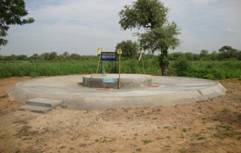
Rainwater harvesting tank
- Manual weeding is being done regularly and uprooted weed is being spreaded as mulch that later on decomposed and contributes organic matter 1.5-2.0 t/ha/year.
- Agrodivesrsity is being maintained by following crop rotation on both temporal and spatial basis.
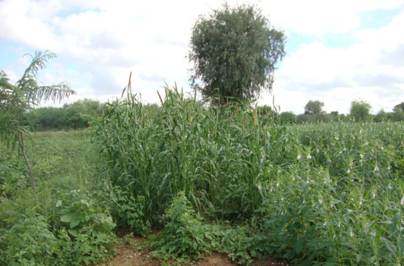
Agrodiversity at MOF,CAZRI
- Biodiversity plantation was done in the model organic farm of 12 fruit and flowering plants, native of the area. Besides, naturally grown about 30 plants of P.cineraria (khejri, an MPTS) were also protected. This plantation ensures nectar supply and shelter to the beneficial insects/birds.
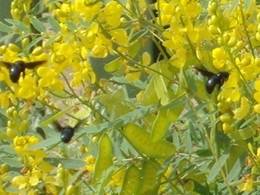

Benficial fauna at Model Organic Farm
- Compost pits were made at one corner of the farm for making good quality of compost with the crop waste.
- Biopesticides is being prepared with neem and other plants leaves and neem seed powder in the storage tanks in the field. Pheromone traps were installed in crop field for trapping the pest like while grub, moth etc. and it worked effectively.
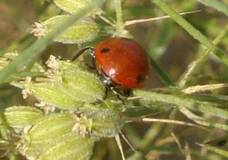
OUTCOME OF EXPERIMENTS AT MODEL ORGANIC FARM, CAZRI
Contribution of legume : Legumes contributed 25-30% higher yield in the subsequent crop. During Rabi season crops of cumin and psyllium were grown in rotation with sesame and cluster bean. Cumin yield of 566 kg/ha and psyllium yield of 808 kg were obtained in the treatments of organic inputs+ cluster bean in rotation .
Crop yield comparison : There is general apprehension that organic system is poor yielder. However, finding at CAZRI shows that the initial developmental stage of organic system there may be low yield by only 20-30% but after 2-3 year once the system developed the yield levels comparable to the conventional system. At third year yield of sesame 886 kg/ha, cluster bean 630 kg/ha, cumin 516 kg/ha and psyllium 808 kg/ha was recorded. This is comparable to the average yield in conventional system.
Sink Partitioning : As the manure level increased, percentage of sink to grain increased from 15.7 to 19.8% while it decreased in case of stem and leaf. This shows better partitioning of sink that increased grain yield, with the application of manure. It may be due to balanced nutrition through compost that used by plant for grain formation
Soil properties improvement : Increase in soil moisture retention with the use of organic manure was observed that helped in better growth and yield of crops .Similarly increase in soil organic carbon from 0.23% to 0.31% was recorded after five year application of compost.
Climate resilience :As reveled after five year of experimentation, crop resilience to climatic variability enhanced with the use of organic manure .
Fauna diversity : Enhanced beneficial fauna diversity by 42% in five years. Manly Coccinellid beetles, Chrysoperla , Syrphid flies,wasps of different types, bumble bees, honey bees etc. population increased while interesting termite population suppressed may be due to use of well decomposed manure.
Pest Management : Pest were kept below Economic threshold level with the integrated use of use of following eco- technologies –
- Soil application of neem cake
- Use of well prepared compost
- Trichoderma viride application in soil and seed treatment
- Use of healthy seed ( also free from weed seeds)
- Hand weeding and mulching
- Prophylactic spray of neem seed kernel extract solution(5.0%) at regular interval
- Use of pheromone traps according to the pest
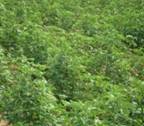


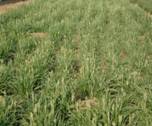
Organic farming is a holistic production system run with the efficient use and recycling of locally available resources. Due to scarcity of water and light soils areas it is best suitable and applicable arid areas. Some monopoly high value crops of this region like seed spices are having great international demand if produce organically. Organic production in arid areas not only boost the economy of this region but also sustain the productivity of natural resources and meet the challenges of changing climate. The need is to do research on development of easy & economic technologies, development of processing and marketing infrastructure and financial well as technical support for quality organic production.
Dr. A.K. Sharma, Sr. Scientist, Email: aksharma@cazri.res.in
